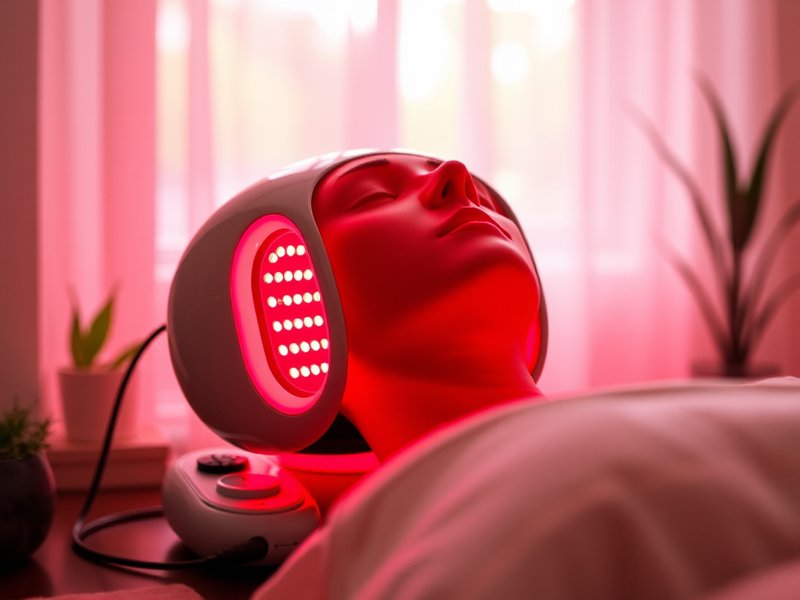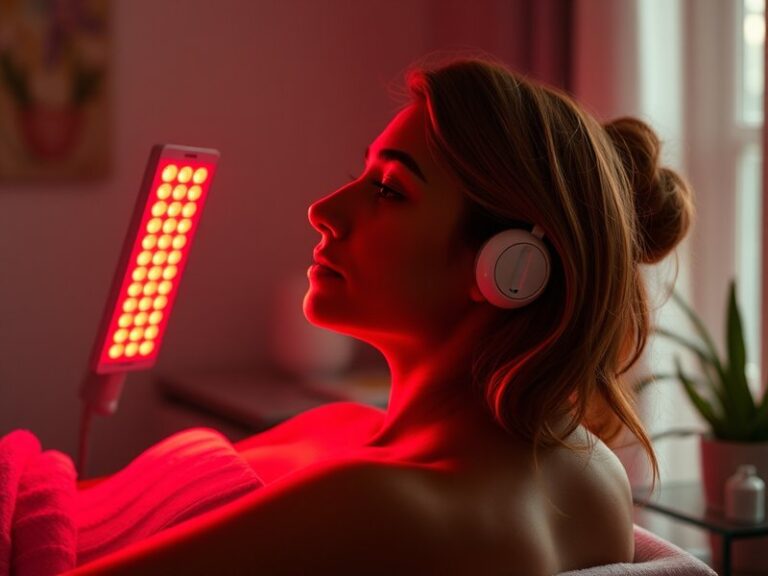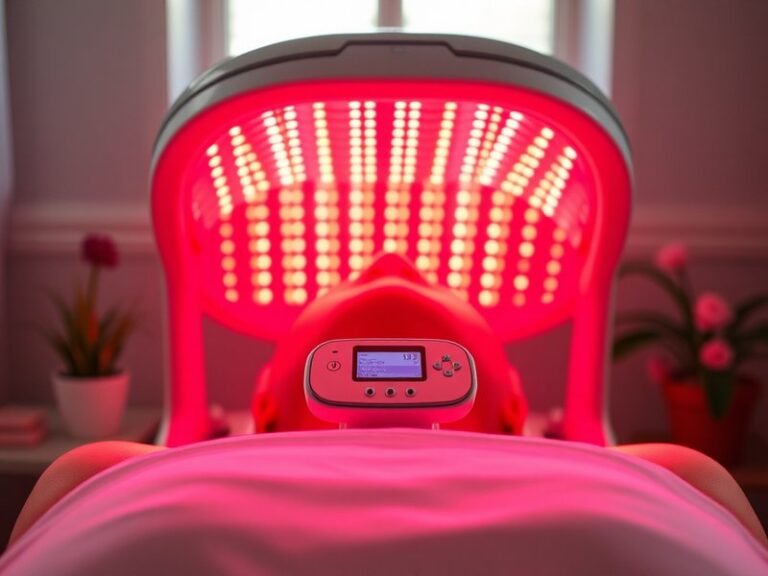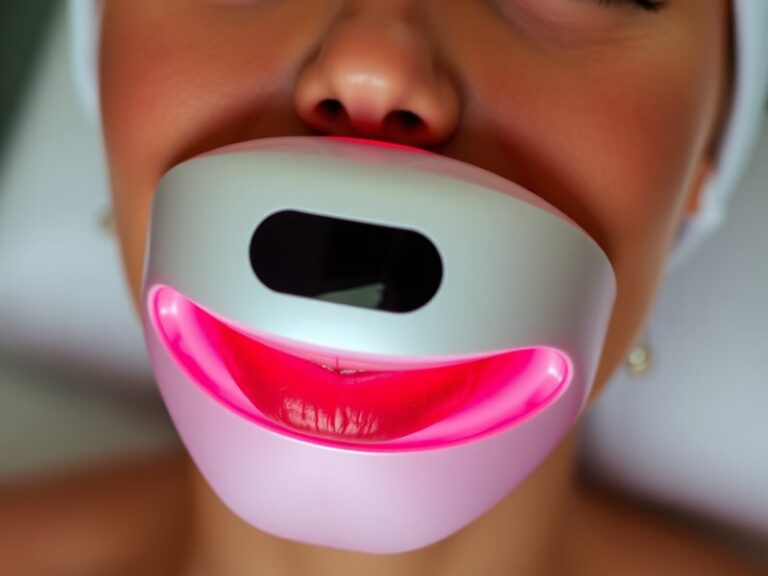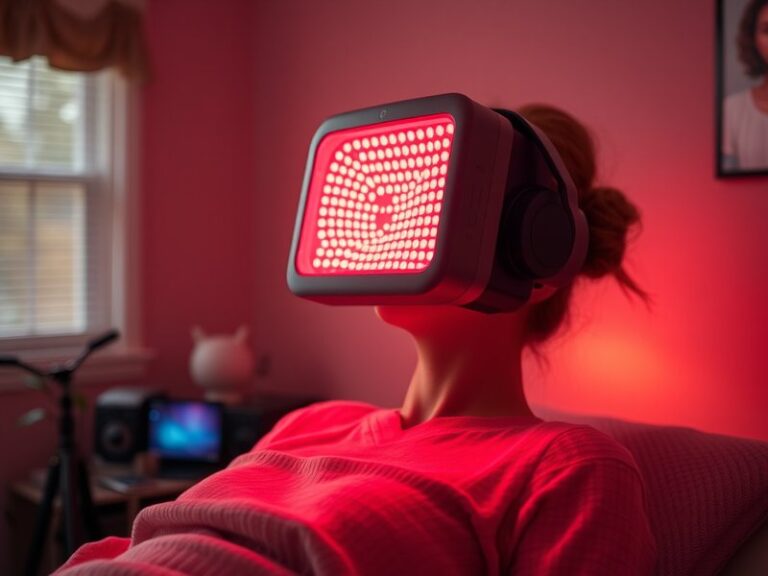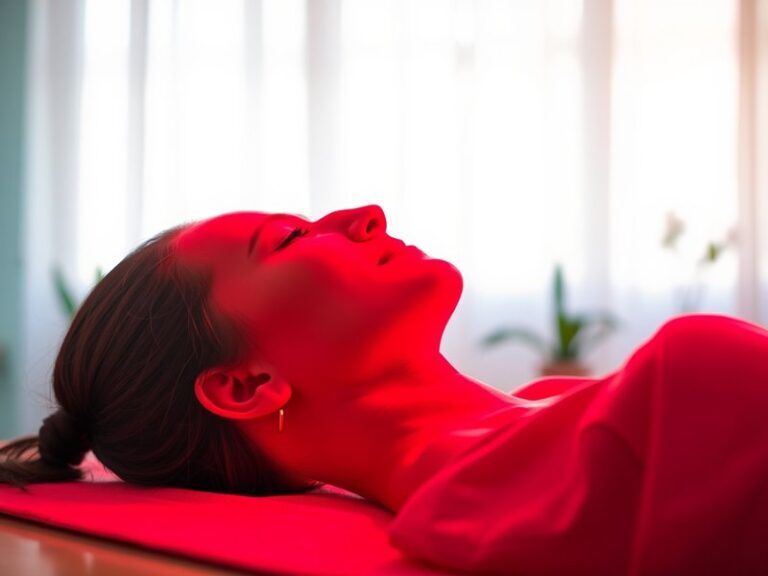What Does Red Light Therapy?
What Does Red Light Therapy Do?
Have you ever wondered how light can be used to enhance your health and well-being?
This article dives into the fascinating world of red light therapy (RLT), exploring its mechanisms, benefits, applications, and considerations. By the end, you’ll have a solid understanding of what RLT involves and if it might be a suitable option for you.
See what we think about Red Light Therapy Frequency
Key Takeaways
- Red light therapy is a non-invasive treatment that utilizes low-wavelength red and near-infrared light to promote healing and cellular regeneration.
- Benefits include improved skin health, reduced inflammation, enhanced recovery from injuries, and potential pain relief.
- It’s important to consider safety, proper usage, and alternative therapies before starting RLT.
What is Red Light Therapy?
Red light therapy is a therapeutic technique that uses specific wavelengths of light, primarily in the red and near-infrared spectrum, to stimulate various biological processes in the body.
Originating from NASA studies in the 1990s on plant growth in space, it has since evolved into a popular treatment for multiple conditions, including skin issues, muscle recovery, and pain management. The therapy is generally administered through LED devices, lasers, or specialized light panels.
Mechanism of Action
When the red or near-infrared light penetrates the skin, it is absorbed by the mitochondria in cells, the powerhouse responsible for energy production. This absorption boosts ATP (adenosine triphosphate) production, enhancing cellular metabolism and function.
Applications of RLT
- Skin Health: RLT is often sought for its rejuvenating effects, improving the appearance of fine lines and wrinkles.
- Wound Healing: Studies suggest that RLT can accelerate tissue repair and reduce scarring.
- Pain Management: It may alleviate pain by reducing inflammation and promoting cellular repair.
What are the Benefits of Red Light Therapy?
Red light therapy offers a variety of benefits, which we’ll explore in detail.
Enhanced Skin Health
Regular use of RLT can lead to improved complexion, reduced acne scars, and a more youthful appearance. Research indicates it stimulates collagen production, essential for skin elasticity.
Reduced Inflammation and Pain Relief
RLT has shown promise in reducing inflammation associated with chronic conditions like arthritis. The therapy may also help in diminishing overall pain levels, making it beneficial for athletes and those with physical injuries.
Improved Muscle Recovery
Athletes often use RLT to speed up muscle recovery post-exercise. By enhancing local circulation and reducing oxidative stress, the therapy can facilitate faster healing after intense workouts.
Better Hair Growth
Some studies suggest that RLT may stimulate hair growth by increasing circulation to hair follicles, proving beneficial for those experiencing hair loss.
Elevated Mood and Energy
Emerging evidence indicates that RLT may improve mood and reduce symptoms of depression, thanks to increased energy production at the cellular level.
Is it Possible to Use Red Light Therapy at Home?
Yes, many individuals choose to utilize red light therapy devices at home. However, it’s crucial to ensure proper usage and precautions are observed for maximum efficacy and safety.
What are the Advantages of Home Use?
- Convenience: Home devices allow for flexible scheduling, making it easy to integrate RLT into your routine.
- Cost-Effectiveness: Owning a device can be more economical than frequent visits to a clinic over time.
- Privacy: Home therapy offers the comfort of treatment in your own space without the need for appointments.
What are the Disadvantages of Home Use?
- Device Quality: Not all devices are created equal, and some may not provide the correct wavelengths or intensity needed for effective treatment.
- Guidance and Support: Professional RLT sessions often come with accompanying care and recommendations that may be lacking with at-home treatments.
- Potential for Overuse: Some users may be tempted to overuse devices, leading to skin irritation or diminishing returns on therapy effectiveness.
What are the Things to Consider Before Using Red Light Therapy?
Before engaging in red light therapy, several important factors should be evaluated.
Consultation with a Healthcare Professional
If you have underlying health conditions or are pregnant, consulting with a healthcare provider is paramount to ensure RLT is safe for you.
Device Selection
Research the quality and specifications of any at-home device. Look for those that emit light at the appropriate wavelengths (between 600 to 900 nanometers) for therapeutic effects.
Treatment Protocol
Establish a clear treatment plan. Understand the duration and frequency recommended for effective results, as this can vary based on the intended use and individual response.
Monitoring Skin Response
Keep an eye on how your skin reacts during the therapy. If you experience any adverse effects, discontinue use and consult a professional.
What are the Alternatives to Red Light Therapy?
If RLT does not align with your needs or preferences, consider these alternatives:
Low-Level Laser Therapy (LLLT)
Similar in principle to RLT, LLLT uses lasers for deeper tissue penetration and can be effective for pain relief and inflammation reduction.
Ultrasound Therapy
Utilizing sound waves, this therapy promotes tissue healing and can be particularly beneficial for muscle and joint issues.
Cold Laser Therapy
Cold laser therapy operates on the same principles as RLT but uses lower energy levels. It’s suitable for pain management and speeding up recovery processes.
Chemical Peels and Microneedling
For those focused on skin improvement, both chemical peels and microneedling are effective treatments for rejuvenating the skin and addressing acne scars.
Conclusion: Is it Recommended to Use Red Light Therapy?
Overall, red light therapy shows significant promise for various applications, particularly in skin health, wound healing, and pain relief. However, like any treatment, it is essential to approach it thoughtfully—consider individual health needs, device quality, and professional guidance.
Frequently Asked Questions
What conditions can red light therapy help treat?
Red light therapy is often utilized for skin aging, acne, joint pain, muscle recovery, and hair loss. Each condition may benefit differently based on individual responses to treatment.
Get the complete insights in Can Red Light Therapy Make You Ill?
How often should I use red light therapy?
Most professionals recommend 2-3 sessions per week to start, with the duration of each session ranging from 10 to 20 minutes, though this can vary based on specific goals and device specifications.
Are there any side effects of red light therapy?
RLT is generally considered safe, but potential side effects can include mild redness, irritation, or photosensitivity in some users. Always monitor your skin’s response.
Can I use red light therapy with other treatments?
Yes, RLT can often be combined with other therapeutic treatments, but consult with a healthcare provider to ensure compatibility and safety.
